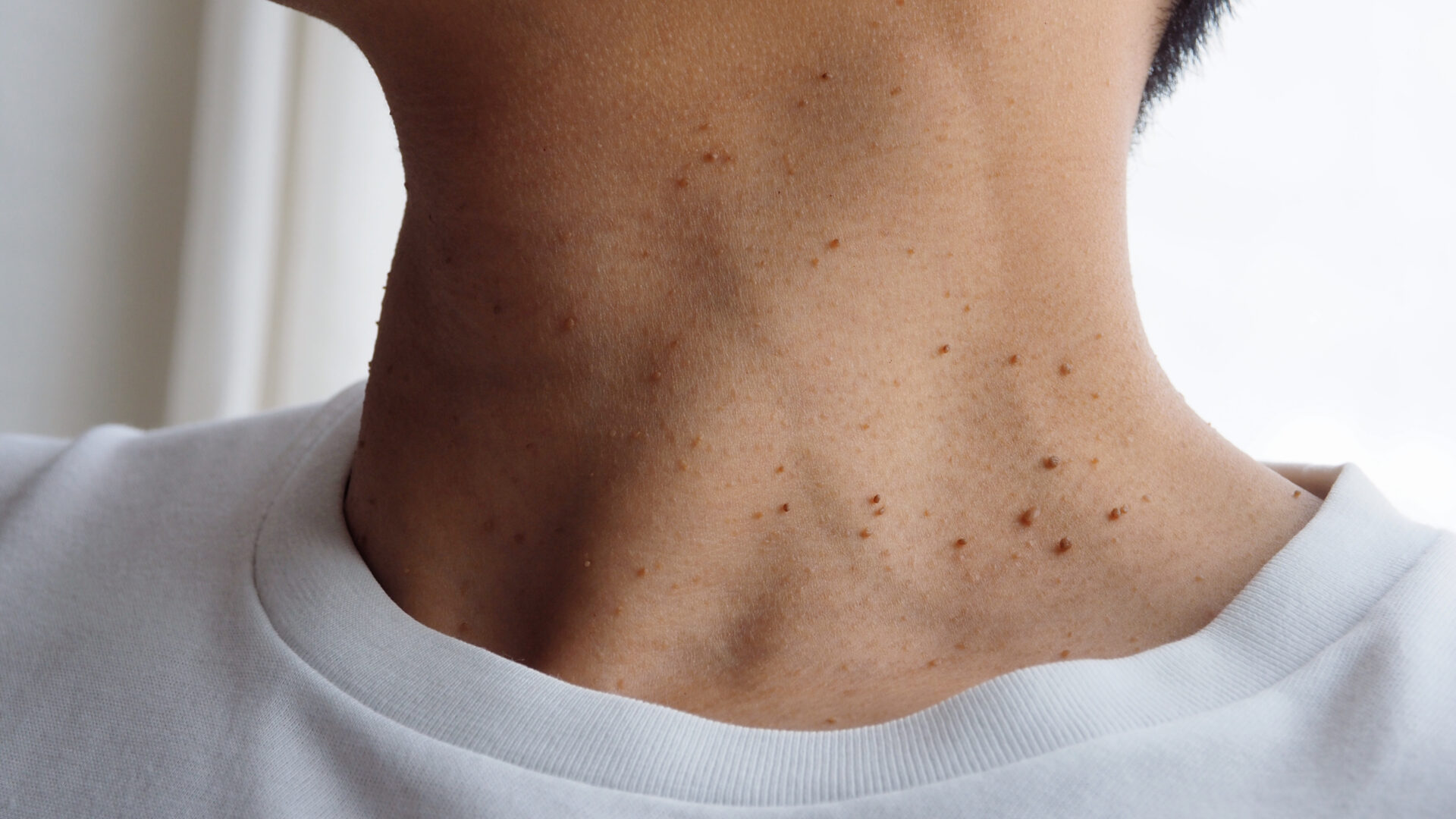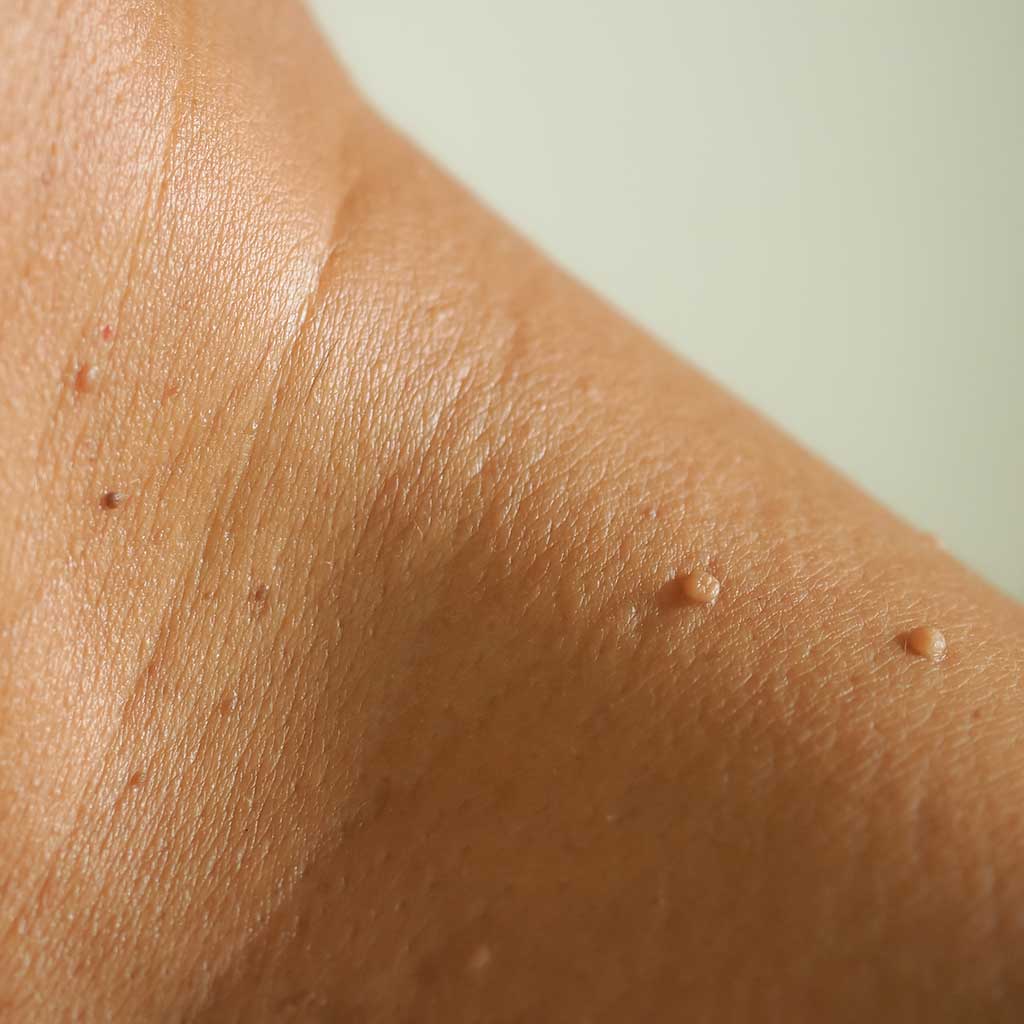Acrochordons (Skin Tags): Causes, Removal, And Treatment Options
Do you ever find yourself pondering the seemingly minor imperfections of your skin, those tiny blemishes that can trigger a cascade of self-consciousness? It's time to shed light on a common yet often unspoken topic: skin tags, those small, benign growths that can be a source of both physical and psychological discomfort for many. Our journalist, Mlanie Morin, has taken the initiative to explore this subject, providing insights and clarity where it's often lacking.
Today, we delve into the world of acrochordons more commonly known as skin tags exploring their nature, causes, and the various options for managing them. From the technical terms like fibroepithelial polyps and soft fibromas, to the practical considerations of removal and prevention, this article aims to provide a comprehensive overview.
Understanding acrochordons means understanding their prevalence and impact. These are very common, with nearly 50-60% of adults developing at least one skin tag in their lifetime, with that probability increasing with age, particularly after the fourth decade of life. They can appear anywhere on the body, but are particularly common in areas where skin folds and rubs, such as the neck, armpits, groin, and under the breasts. Skin tags are generally harmless, but their appearance can be bothersome, and they may catch on clothing or jewelry, causing irritation or even pain. Furthermore, factors such as friction, hormones, genetics, obesity, and even pregnancy have been linked to the development of skin tags.
- Kim Kardashians Marriage To Kris Humphries Length Timeline
- Gibby From Icarly What He Looks Like Now Where Is Noah Munck
| Aspect | Details |
|---|---|
| Common Names | Skin tags, Acrochordons, Fibroepithelial polyps, Molluscum pendulum |
| Nature | Benign, soft, harmless growths |
| Appearance | Small, often skin-colored or hyperpigmented; may appear as surface nodules or papillomas. They can resemble small balloons on stalks. |
| Common Locations | Neck, armpits, groin, eyelids, under breasts, around the anus |
| Causes/Contributing Factors | Friction (rubbing of skin), hormonal imbalances, genetics, obesity, pregnancy, diabetes |
| Prevalence | Very common; about 50-60% of adults develop at least one |
| Associated Symptoms | Often asymptomatic; can cause irritation, itching, pain if caught on clothing or jewelry |
| Removal Methods | Cryotherapy (freezing), excision (surgical removal), cauterization (burning off), ligation (tying off) |
| Important Considerations | Consult a dermatologist for diagnosis and treatment; avoid self-treatment without professional guidance; consider underlying causes. |
| Link to Authentic Website for Reference | Mayo Clinic - Skin tags |
The development of skin tags can be related to several factors. Friction plays a significant role; areas where skin rubs against itself, such as in skin folds, are prime locations for skin tag formation. Hormonal changes, such as those occurring during pregnancy, can also trigger their appearance. Genetics can make someone more susceptible to them; a family history of skin tags often increases the likelihood of developing them. Further, obesity, particularly in people with insulin resistance, and conditions like diabetes are frequently associated with skin tags, suggesting a possible link to insulin and growth factors.
The good news is that the medical world offers numerous solutions for managing skin tags. While some individuals may choose to live with them, many find them aesthetically displeasing or experience physical discomfort, prompting them to seek removal. Dermatologists typically use a variety of methods, including cryotherapy (freezing the skin tag off with liquid nitrogen), excision (snipping or cutting it off), cauterization (burning it off with heat), or ligation (cutting off the blood supply by tying it off). The choice of method depends on the size, location, and number of skin tags. It's essential to consult a dermatologist to determine the most appropriate and safest treatment plan, as self-treatment carries risks.
Surgical removal of acrochordons, although effective, has its own considerations. The procedure, which typically involves cutting off the skin tag, can result in bleeding, and there is always a risk of infection at the wound site. The cost of such treatments can be another factor. Therefore, the decision to pursue surgical removal should be made in consultation with a healthcare professional, weighing the benefits and risks.
- Nick Cassavetes Spouse Family Exploring His Marriages Life
- Gel Nail Polish Allergy What You Need To Know
Alternative treatments, such as creams and lotions, are also available, including those marketed as "100% natural" solutions. While some individuals find these effective, its important to approach such products with caution. Always check the ingredients and consult with a dermatologist before use, as these products may not be regulated and may contain substances that could cause irritation or allergic reactions. Some people have also looked into removing them using home remedies, but again, such methods are not always safe and may lead to complications, including infection.
The identification of skin tags is usually straightforward. They have a characteristic appearance, typically being small, soft, and flesh-colored or slightly darker. However, its important to differentiate them from other skin conditions, such as moles, warts, or even more serious lesions. If youre unsure about the nature of a skin growth, its essential to seek a professional medical opinion. This is particularly important to adapt the treatment and prevent any potential risk of contagion, as some skin conditions can be infectious.
Beyond the simple cosmetic concern, there's also the question of underlying health. Skin tags can sometimes be associated with conditions like diabetes or insulin resistance. Therefore, the presence of numerous or rapidly growing skin tags may warrant a check-up to rule out any underlying medical issues. Additionally, the friction and irritation caused by skin tags can sometimes lead to secondary issues like inflammation or infection, further emphasizing the importance of appropriate management.
Skin tags typically appear as people age, and are quite common in people over 60. They often develop after weight gain or during pregnancy. Therefore, there's often a link between lifestyle factors and the appearance of these growths. This connection underscores the importance of a holistic approach to skin health, including maintaining a healthy weight, addressing any underlying health conditions, and practicing good hygiene.
In some cases, the development of an unusual mass, like a 20 cm vulval mass or a progressively enlarging vulval mass, may require medical attention and further investigation. Although uncommon, such cases highlight the importance of recognizing any unusual skin changes and seeking proper diagnosis.
In conclusion, acrochordons are a common but frequently underestimated skin condition. By understanding their nature, causes, and the available management options, individuals can make informed decisions about their skin health. Whether it's seeking professional removal, exploring lifestyle adjustments, or simply gaining peace of mind through education, there are many ways to address the presence of skin tags. With the right knowledge and approach, you can navigate the world of acrochordons and make choices that enhance your skin's health and your overall well-being.



Detail Author:
- Name : Ms. Marta Halvorson I
- Username : andy83
- Email : tyree.eichmann@hotmail.com
- Birthdate : 1996-09-21
- Address : 898 Franecki Row Apt. 560 Peggieborough, HI 86327-5362
- Phone : +18164330273
- Company : Purdy PLC
- Job : Product Safety Engineer
- Bio : Rerum voluptatem est dolore ut voluptas quaerat unde. Qui ut qui voluptatibus voluptatibus. Aliquam et distinctio eos accusamus. Velit necessitatibus corrupti perferendis est laudantium.
Socials
twitter:
- url : https://twitter.com/bergeb
- username : bergeb
- bio : Quibusdam et suscipit ipsum et sint dicta cupiditate. Aut voluptas fugiat quasi voluptatem iste nam. Doloremque architecto sit esse. In modi ut quisquam quis.
- followers : 2958
- following : 578
linkedin:
- url : https://linkedin.com/in/bergeb
- username : bergeb
- bio : Earum corrupti et non quis porro minus.
- followers : 4183
- following : 185
tiktok:
- url : https://tiktok.com/@billie.berge
- username : billie.berge
- bio : Facere consequatur omnis reiciendis odit et quibusdam reiciendis.
- followers : 5086
- following : 622
facebook:
- url : https://facebook.com/billie_xx
- username : billie_xx
- bio : Veniam autem non quidem qui quo et autem. Harum aut nam nihil ut nemo.
- followers : 2223
- following : 2925